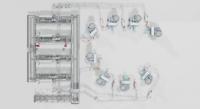 Add My Company
Add My Company
Sign In

Pet Food Pouch Market Insights
Pouches are among the fastest-growing formats. According to data shared by Global Market Insight, the size of the liquid pouch packaging market was over USD 8 billion in 2020, with an estimated growth of over 6.5% CAGR between 2021 and 2027 (Source: Global Market Insights). Pet food is one of the more interesting industries in the pouch packaging field. This type of flexible packaging offers several advantages. For example convenience, a large capacity in relation to the size of the packaging, and, if produced with the correct materials, a long shelf life. For this reason, it is the ideal choice for the packaging of dry products (kibble or treats). Furthermore, it is often used for semi-moist products (meat-based food), or liquids (soups). Pouch packaging is usually made by “form fill seal” machines, such as those produced by Volpak. The machines span all the stages, from forming to filling to hermetic sealing. These processes are critical: in the case of pet food, machines must dose the product with precision and handle it correctly during package forming and sealing, while meeting strict hygiene standards.
Handling pet food pouches: critical issues
The transportation stages after packaging require the same precision and care. Once filled and sealed, the pouch doesn’t need overpackaging. Its very nature, however, makes it less stable than a box or a hard case, for instance. At the same time, the small contact surface it offers to the conveyor makes it more complex to move. This is because the packaging must be in contact as little as possible with the guide rails to avoid possible damage. Moreover, in the case of nuggets or other wet food, the packaging is often full of thick liquids such as gels or seasoning sauces, which are still very hot after the filling and sealing stages. This causes condensation on the outer surface of the pouches. Furthermore, it generates humidity, which is another important factor when it comes to designing a suitable transportation method.
What does a pouch conveyor line look like?
To meet the client’s requirements, the system usually needs to be set up as an open transport, with no guide rails. As the gravity center can change for each pouch due to the hot liquid inside, it is more likely that the pouch rotates. Therefore, the transport without guide rails prevents the pouches from being damaged. Furthermore, the conveyor chain needs to be inclined of 5 degrees maximum (15 degrees in a “friction top chain” configuration). The reason: pouches can be moist and, therefore, slippery. Finally, it is necessary to add special bridges between the conveyors because the pouches are not stable. The bridge, mostly driven by belt or roller bridges, is set side to side so that the pouches can be transported smoothly from one conveyor to another. Then the pouches are transported towards the drying machines and, afterward, towards the secondary packaging area. This stage can be managed in two ways: relying on human work – which means manually putting the pouches inside the boxes – or automating the whole process with cobots or case packers, for example.
Flexlink’s answer: flexible, accurate and hygienic
Flexlink boasts a long experience in the design of systems for line automation. We offer the best solution after the sealing stage, from pouch handling to secondary packaging. It is possible to configure the line conveyor system according to specific needs while offering both an especially delicate handling and compliance with strict hygiene standards throughout the whole production workflow. For instance, if a pouch gets damaged and liquid spills, the structure of the conveyor will ensure easy cleaning and resetting. Moreover, stainless steel ensures hygiene and washability. Lastly, Flexlink offers a wide portfolio of solutions that increase the efficiency of downstream components. For instance, by automating the way products are placed in boxes.
The expertise of Coesia at your service
Being part of Coesia enriches the company’s know-how, as the Company brings further expertise also thanks to partnerships among its member companies. This environment allows Flexlink to work in a predictive manner, taking advantage of the experience of its sister company. In this case, Volpak’s forty-year expertise in the pouch industry. For example, when designing a pouch packaging line dedicated to pet food. Volpak can carry out specific tests before the final installation by simulating production conditions and putting pouches into the same stress conditions that they may undergo during the actual process. More info in this blog. These tests are carried out at the “Pouch Lab”, a research and development center at Volpak’s headquarters. Here the company tests the mechanical resistance and behavior of pouches by using different materials and simulating different environmental conditions.
Hopefully, you gained some valuable information from our article. Contact us, if you would like to discuss your challenges in pet food production. Also, feel free to visit our website and follow us on LinkedIn for more regular updates on industrial automation and robotics.
For more information on Technology challenges in the Pet Food Pouch Production talk to FlexLink Systems Ltd
Enquire Now
List your company on FindTheNeedle.

